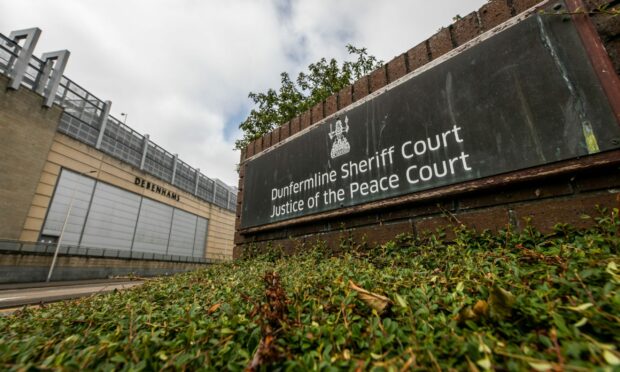A Fife landscaper killed when his power tools came into contact with an 11,000 volt power cable may have escaped death if he had carried out a risk assessment, a sheriff has ruled.
David Anderson died at a property in Dunino in October 2020, while trimming a hedge.
An investigation found the combined height of a ladder the 59-year-old was using while trimming a four-metre hedge, along with the size of his hedge trimmer, was greater than the clearance of nearby overhead power cables.
Mr Anderson, who was self-employed, was found by his son in the garden of the property.
He had not seen or heard the accident as he had been cutting the same hedge from the other side.
Despite receiving CPR for nearly 40 minutes, Mr Anderson could not be saved.
A post mortem concluded he had died as a result of electrocution “causing a cardiac arrhythmia and sudden death”.
Health and Safety Executive probe
At a Fatal Accident Inquiry in Dunfermline, Sheriff Alison Michie heard Mr Anderson had cut the hedges at the property on two previous occasions.
Fiscal depute Rebecca Swansey told the court an electrical power line ran above part of the hedge at a height of approximately 5.5 metres above ground level.
However, neither Mr Anderson nor his son believed they were low enough to cause a problem.
Mr Anderson used an aluminium ladder and a long-reach hedge trimmer, totalling almost six metres.
It is believed as he moved along the 15-metre hedge, Mr Anderson lifted the trimmer high enough for it to come into contact with the cables, or for the 11,000 volt current to arc.
A subsequent Health and Safety Executive (HSE) investigation found the lines were over the 5.2m minimum ground clearance.
Its report concluded there should have been a three-metre exclusion zone in place near the power lines.
Sheriff’s determination
Sheriff Michie concluded Mr Anderson may have overlooked the danger posed by the power lines and had he carried out a risk assessment he might have realised his ladder and tools exceeded the height of the cables.
She said: “Had that risk been identified it should have led Mr Anderson to identify an exclusion zone in the area beneath the overhead lines.
“Identifying an exclusion zone in advance of starting work serves as a reminder of the danger and protects against momentary lapses in concentration while focused on the work.
“Carrying out a risk assessment and establishing an exclusion zone might realistically have avoided the accident which resulted in the death of Mr Anderson.
“I consider that the failure to follow the HSE guidance and to conduct a risk assessment and create and observe an exclusion zone was a defect in the system of working which contributed to the death of Mr Anderson.”
She extended her condolences to Mr Anderson’s family.










